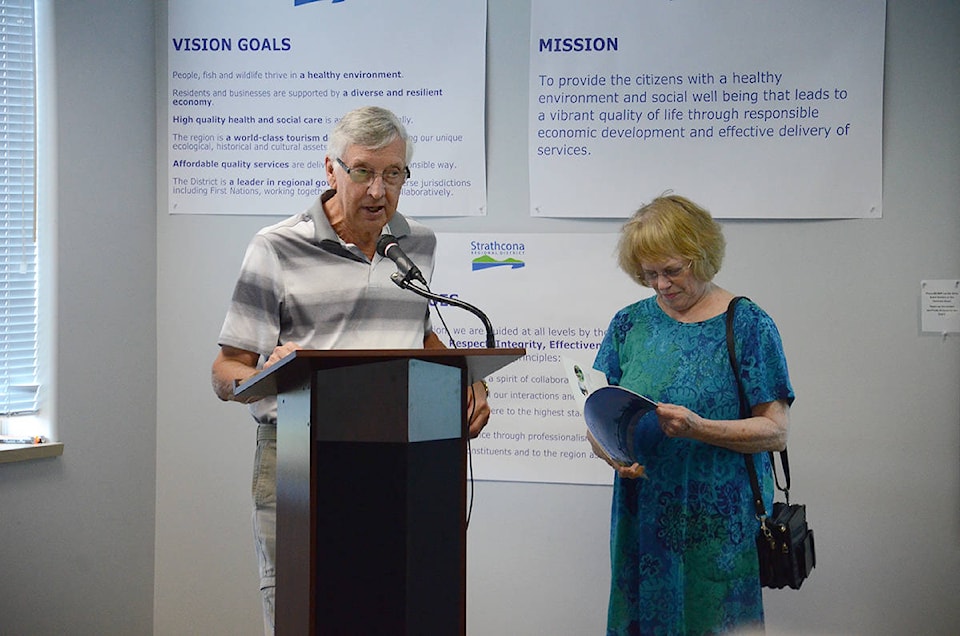Vital signs generally refer to an individual person’s health, but a VitalSigns report for the area is taking a look at the overall health and well-being of the community.
It’s the product of the Campbell River Community Foundation. CRCF board chair Jim Harris and past chair Mary Ashley outlined the previous report to the SRD board at the July 18 meeting, as well as the progress of the new one due this fall.
RELATED STORY: Community Foundation charts Campbell River’s vitals
The foundation started in 1990 and is one of six on Vancouver Island.
“What we do is build an endowment fund,” Ashley said. “We started a little slow, but our funds have gradually increased.”
Typically, community foundations raise money for community projects, though the principle raised is not touched. Only the interest earned goes to projects to support the community.
As one of these projects, the VitalSigns report looks at indicators in an area that generally follows School District No. 72 boundaries. It’s part of a national program for community foundations to look at the quality of life and health in communities.
The first version in 2016 covered a range of topics: arts and culture, children and youth, environment, health, housing, income, seniors and work, among other topics. It also provides a demographic breakdown of the region.
“What it does is it gives sort of a ‘health’ feeling of the community,” Harris said. “It’s one of the few publications that has all this information in it.”
As far as what information, it includes everything from the number of visits people make to museums and libraries to child poverty rates to the cost of housing. One example that stood out for Ashley about this community was that roughly three out of every four people in the community do some kind of volunteer work, which compares with the national average of 47 per cent.
“When I read that, I jumped for joy,” Ashley said.
Some SRD members had questions about the content of the original version, such as Charlie Cornfield, who asked about why water quality was listed as “fair” when the city typically finishes strongly in water quality competitions. The foundation representatives said there were a few issues around wording that needed to be considered more carefully in the upcoming edition.
The second report should be done in early October, with 3,000 copies to be distributed through agencies and organizations such as the City of Campbell River, the chamber of commerce, the tourism office and others.
“We’re going to do VitalSigns every two years,” Harris said.
He expects the next edition will have more thorough and current information, especially as it is based on the latest, long-form census.
The cost to produce the VitalSigns document is approximately $25,000 to cover the research and production. They do have partners, though the foundation itself is putting in $5,000. However, it has had to raise $15,000 over and above that cost. Harris said they are close, probably within about $3,500 of the total needed, so the foundation is looking for support.
“We’d like the regional district to consider becoming a partner,” Harris said. “We also have a lot of support from non-profits in town.”
SRD chair Michele Babchuk asked Harris and Ashley to make the request in writing, so the board can consider at its next meeting.
